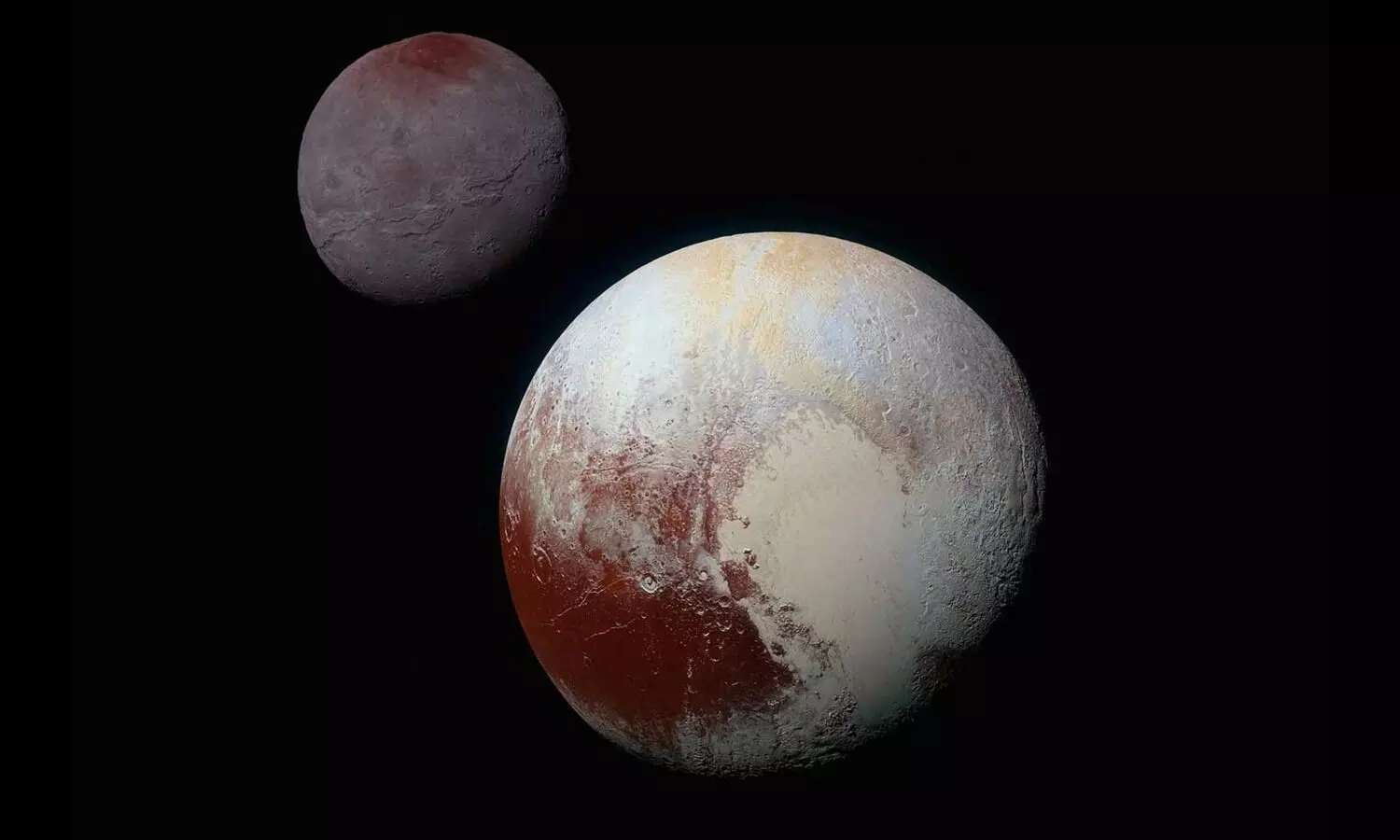Pluto and Charon’s Origin Redefined: A Cosmic Kiss and Capture
A new study reveals Pluto and Charon collided billions of years ago, forming a binary system and reshaping ideas about planetary evolution and icy bodies.
image for illustrative purpose

Researchers have uncovered a groundbreaking scenario about the formation of Pluto and its largest moon, Charon, reshaping decades of scientific understanding. A study from the University of Arizona’s Lunar and Planetary Laboratory suggests that the two icy bodies, rather than colliding violently, underwent a “kiss and capture” event billions of years ago.
The findings challenge the prevailing theory that Charon was created from a massive impact, similar to how Earth’s moon is thought to have formed. Instead, the study proposes that Pluto and Charon briefly fused into a shape resembling a celestial snowman before separating into a binary system.
The research, led by NASA postdoctoral fellow Adeene Denton, reveals a previously unrecognized type of celestial collision. Unlike the “hit and run” or “graze and merge” impacts seen in other planetary systems, Pluto and Charon’s interaction was unique. After their initial contact, the two icy bodies remained gravitationally bound, rotating around a shared center of mass.
“We assumed Pluto’s moon formed from a violent impact,” Denton explained. “But we overlooked the fact that these are icy worlds, not hot, fluid-like planets. Considering their cold, solid nature led us to an entirely different conclusion.”
The team used high-powered computer simulations to analyze the collision dynamics. The models revealed that instead of shattering or deforming significantly, Pluto and Charon briefly stuck together. This temporary union allowed the two bodies to maintain their structural integrity while forming a stable binary system. A binary system occurs when two celestial bodies orbit a common center of gravity, much like two dancers spinning while holding hands.
This “kiss and capture” scenario provides new insights into the formation and evolution of icy bodies in the solar system. The study also suggests that the collision generated enough internal heat to influence Pluto’s geology. This heat may have contributed to the formation of a subsurface ocean, even during a time when radioactive decay in the solar system was less intense.
“The collision heat and tidal forces could have played a critical role in shaping Pluto’s surface features,” Denton noted.
Unlike previous models that depicted Charon’s creation as a result of a catastrophic impact, this study shows that the two bodies remained mostly intact. The findings align with observations of Pluto’s and Charon’s compositions, which consist primarily of rock and ice.
“This discovery solves a long-standing mystery,” said Erik Asphaug, senior author of the study. “It explains Charon’s formation and places it in the correct orbit without requiring a violent impact.”
The study raises new questions about how tidal forces influenced the geology of Pluto and Charon after their separation. Researchers plan to investigate how these forces might have shaped the unique surface features observed on Pluto today.
“This model opens the door to exploring how other binary systems in the universe might have formed,” Denton said. “It challenges traditional ideas about planetary formation and shows that icy bodies can evolve in ways we never imagined.”
The research redefines how scientists view planetary and moon formation, particularly in icy, distant regions of the solar system. By demonstrating that icy worlds can collide and evolve without catastrophic destruction, the study highlights the diversity of planetary evolution pathways.

